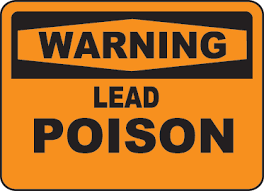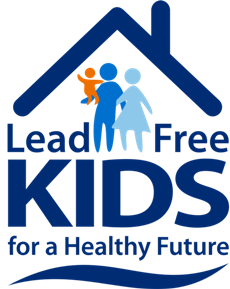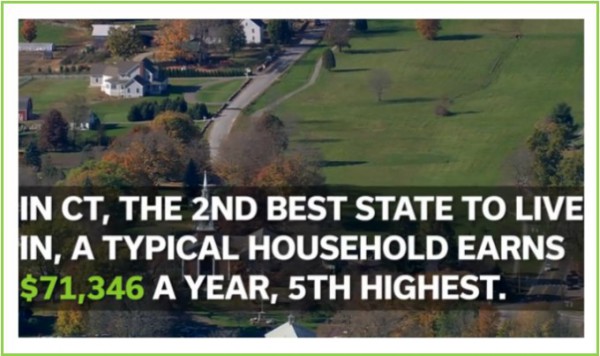Lead Poisoning Is A Problem for Connecticut Children, National Study Reveals
/A Reuters news service examination of lead testing results across the country found almost 3,000 areas with poisoning rates far higher than in Flint, Michigan, which was the focus of national attention this year for its dangerously tainted water supply.
 The review and analysis found at least seven areas in Connecticut, based on zip code geography, where the percentage of children found to have elevated lead levels exceeded – more than doubled – the percentage in Flint.
The review and analysis found at least seven areas in Connecticut, based on zip code geography, where the percentage of children found to have elevated lead levels exceeded – more than doubled – the percentage in Flint.
The Centers for Disease Control and Prevention (CDC) estimates that nationwide, around 2.5 percent of children ages 0-6 have an elevated lead level, defined as 5 micrograms/deciliter or higher. Among small children tested in Flint, Michigan during the peak of that city’s lead contamination crisis, 5 percent had elevated levels, or double the average.
In many neighborhoods – census tracts or zip code areas – across the country, a far higher rate of children have tested high in recent years. The zip codes in Connecticut with elevated lead levels in more than 5 percent of children tested include more than a dozen neighborhoods and communities scattered across the state, with the highest levels in the towns of Canaan and Sharon, and the cities of Bridgeport, New Haven, and Waterbury.
 The State Department of Public Health website indicates that “childhood lead poisoning is the most common pediatric public health problem, yet it is entirely preventable. Once a child has been poisoned, the impairment it may cause is irreversible. Lead harms children’s nervous systems and is associated with reduced IQ, behavioral problems, and learning disabilities.”
The State Department of Public Health website indicates that “childhood lead poisoning is the most common pediatric public health problem, yet it is entirely preventable. Once a child has been poisoned, the impairment it may cause is irreversible. Lead harms children’s nervous systems and is associated with reduced IQ, behavioral problems, and learning disabilities.”
Since the 1970s, U.S. efforts to eradicate childhood lead poisoning have made what Reuters describes as “remarkable progress,” while pointing out that “the advances have been uneven.” Legacy lead – in paint, plumbing, yards, well-water or even playgrounds – means that kids in many neighborhoods remain at a disproportionately high risk of poisoning, the news service report explained.
The news service conducted a nationwide analysis of childhood blood lead testing data at the neighborhood level. Census tract or zip code level data reflecting the local prevalence of elevated lead tests was obtained from 21 states, including Connecticut. The highest prevalence was found in:
Zip Code Tested Children /Elevated Results
06031 Canaan 107 / 15.89%
06608 Bridgeport 8,602 / 13.32%
06511 New Haven 15,731/12.88%
06519 New Haven 8,318 / 11.95%
06607 Bridgeport 4,079/10.9%
06710 Waterbury 6,133/ 10.48%
06069 Sharon 137 /10.22%
Across the country, Reuters found nearly 3,000 areas with recently recorded lead poisoning rates at least double those in Flint during the peak of that city’s contamination crisis. And more than 1,100 of these communities had a rate of elevated blood tests at least four times higher.
Reuters reports that zip codes have average populations of 7,500. In each area, a relatively small number of children are screened for lead poisoning each year, the report indicated.
each year, the report indicated.
The poisoned places stretch from Warren, Pennsylvania, a town on the Allegheny River where 36 percent of children tested had high lead levels, to a zip code on Goat Island, Texas, where a quarter of tests showed poisoning, the Reuters analysis indicated. In some pockets of Baltimore, Cleveland and Philadelphia, where lead poisoning has spanned generations, the rate of elevated tests over the last decade was 40 to 50 percent.
“I hope this data spurs questions from the public to community leaders who can make changes,” said epidemiologist Robert Walker, co-chair of the CDC’s Lead Content Work Group, which analyzes lead poisoning nationwide. “I would think that it would turn some heads.”
The findings, Walker told Reuters, will help inform the public about risks in their own neighborhoods and allow health officials to seek lead abatement grants in the most dangerous spots.
Congress recently directed $170 million in aid to Flint - 10 times the CDC’s budget for assisting states with lead poisoning this year, Reuters reported.




 “Increasingly, towns will not be able to afford to sustain the level of services to which they have become accustomed, as budget pressures increase along with a reluctance to raise taxes. Residents showed concern, and a willingness to consider regionalism as a partial solution,” said Robert W. Santy, who serves as Board Chair of Inform CT and is President & CEO of the Connecticut Economic Resource Center (CERC) Inc.
“Increasingly, towns will not be able to afford to sustain the level of services to which they have become accustomed, as budget pressures increase along with a reluctance to raise taxes. Residents showed concern, and a willingness to consider regionalism as a partial solution,” said Robert W. Santy, who serves as Board Chair of Inform CT and is President & CEO of the Connecticut Economic Resource Center (CERC) Inc. Quality of life in the United States is heavily dependent on financial status, the survey summary points out. As a consequence, the nation’s best states to live in often report very high incomes. With a median household income of $71,346 a year, fifth highest of all states, Connecticut is the second
Quality of life in the United States is heavily dependent on financial status, the survey summary points out. As a consequence, the nation’s best states to live in often report very high incomes. With a median household income of $71,346 a year, fifth highest of all states, Connecticut is the second

 Members of the Department of Motor Vehicles (DMV) Teen Advisory Board said the week is important for a variety of reasons, and encourages teens to play an active role in promoting safety behind the wheel. The risk of motor vehicle crashes is higher among 16-19-year-olds than among any other age group, CDC data indicates. In fact, per mile driven, teen drivers ages 16 to 19 are nearly three times more likely than drivers aged 20 and older to be in a fatal crash.
Members of the Department of Motor Vehicles (DMV) Teen Advisory Board said the week is important for a variety of reasons, and encourages teens to play an active role in promoting safety behind the wheel. The risk of motor vehicle crashes is higher among 16-19-year-olds than among any other age group, CDC data indicates. In fact, per mile driven, teen drivers ages 16 to 19 are nearly three times more likely than drivers aged 20 and older to be in a fatal crash. In 2014, roughly 30 out of every 1,000 people across the U.S. were victims of crime, while Connecticut’s crimes affected only 21 out of 1,000 people. Among the state’s 20 safest cities, however, only about three crimes were reported for every 1,000 citizens.
In 2014, roughly 30 out of every 1,000 people across the U.S. were victims of crime, while Connecticut’s crimes affected only 21 out of 1,000 people. Among the state’s 20 safest cities, however, only about three crimes were reported for every 1,000 citizens.

 FBI Special Agent Judy Eide, a 25-year veteran currently assigned to the Bureau’s New Haven Division Computer Crime squad and a coordinator of the Connecticut Chapter of InfraGard, will be one of the speakers. Also on the program is Mark Ramsey the Chief Information Security Officer for ASSA ABLOY – Americas and President of the Connecticut Chapter of InfraGard. Ramsey also teaches at Fairfield University, and previously held information security positions at Stanley Black & Decker and General Electric.
FBI Special Agent Judy Eide, a 25-year veteran currently assigned to the Bureau’s New Haven Division Computer Crime squad and a coordinator of the Connecticut Chapter of InfraGard, will be one of the speakers. Also on the program is Mark Ramsey the Chief Information Security Officer for ASSA ABLOY – Americas and President of the Connecticut Chapter of InfraGard. Ramsey also teaches at Fairfield University, and previously held information security positions at Stanley Black & Decker and General Electric.
 “We want this to be a must-attend event for anyone responsible for strategic technical decisions within their organization,” says Steven Bulmer, Walker’s vice president of professional services. “Tech Impact is really a self-defining event based upon the intense interest and demand from our clients, especially for information security services.”
“We want this to be a must-attend event for anyone responsible for strategic technical decisions within their organization,” says Steven Bulmer, Walker’s vice president of professional services. “Tech Impact is really a self-defining event based upon the intense interest and demand from our clients, especially for information security services.”

 The New Haven Register
The New Haven Register 






























